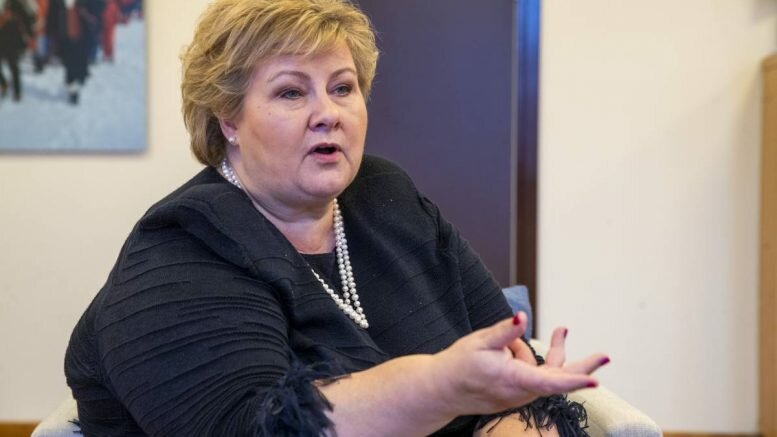The number of young disabled people has continued to increase under Erna Solberg’s (H) government. Now she is presenting a new plan for how to get more young disabled people into work.
The seafood company SalMar on the small island of Frøya was one of the stops on the first day of Prime Minister Solberg’s election campaign tour in Trøndelag on Wednesday. The company, owned by billionaire Gustav Witzøe, employs around 650 people, and 100 young people have been given permanent jobs through collaboration with the NAV.
Solberg is now presenting a plan that aims to get even more people who have been out of work back to work:
* Introduce a follow-up model for young disabled people before the age of 30, which includes a closer follow-up and a new assessment of the degree of disability, but secure exceptions for those with serious disorders.
* Shorten the minimum requirement for an offer of follow-up from the NAV from eight to five weeks
* Introduce more programs for young people who show up at the NAV so that they are kept away from benefits and return to school or work.
In addition, the Conservatives point out that the Ministry of Labor and Social Affairs is in the process of looking more closely at the proposal from the Employment Committee for a work-oriented disability benefit.
Psychological challenges
According to Solberg, many young people receive disability benefits because they face psychological challenges.
“It is something you can get through,” Solberg said. She believes many such people even want to return to work.
“If you are under a certain age and on disability benefits, we believe you should be part of a measure that leads to you being able to get back to work,” Solberg said.
Solberg rejects the notion that the government plans to raise the threshold for receiving disability benefits.
“Our thought is that if you are covered by disability benefits, you can think in a year or two that you will return. But then you are often not given priority,” she said.
Numbers increasing
In 2018, an alarm was sounded when Statistics Norway (SSB) presented figures which showed that the number of young people who received disability benefits had grown by 5,000 since 2015.
In 2019, the number of young disabled people increased by 2,000. In the last seven years, the number of young disabled people has doubled, from 10,000 to 20,000, the newspaper Klassekampen writes.
Solberg believes that there are two reasons why the number of young disabled people has increased on her shift: more children and young people are struggling with mental challenges, and more people with developmental disabilities or various forms of trauma are growing up and getting old.
According to Solberg, it is important to distinguish between the group that will always be qualified for disability benefits because they do not enter the ordinary labor market and the group that struggles with mental health problems.
“But we have a job to do for young people who face challenges early on in the form of bullying, abuse, and other things that make them drop out of school. They must be lifted and helped,” she said.
Source: © NTB Scanpix / #Norway Today / #NorwayTodayNews
Do you have a news tip for Norway Today? We want to hear it. Get in touch at [email protected]






Be the first to comment on "Here’s how Solberg plans to get more unemployed and disabled young people in Norway back to work"